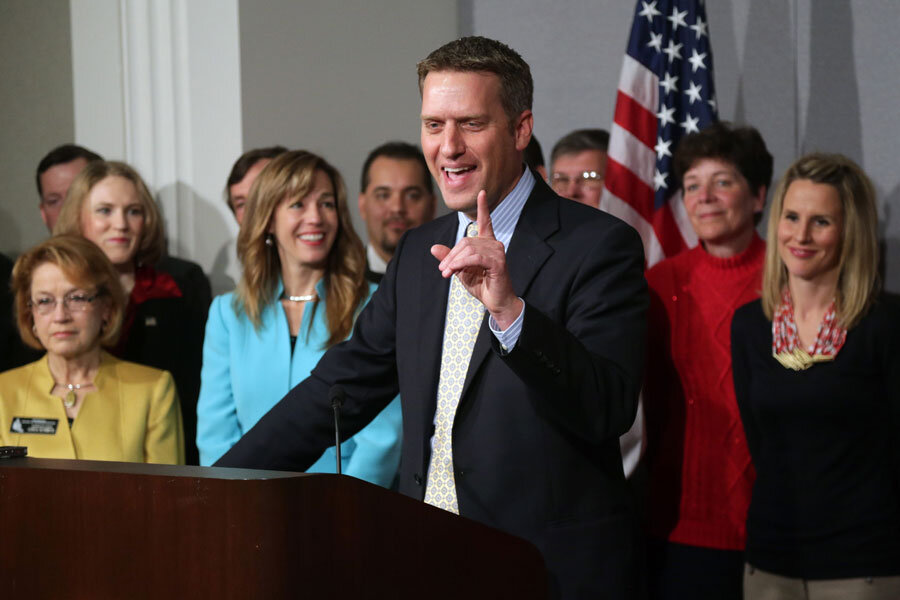State legislatures now redder than they've been in nearly a century
Loading...
From Sen. Harry Reid’s Nevada to the “blue” bastions of New York State and Minnesota, legislative chambers at the state level are shifting into Republican control as a result of Tuesday’s election.
In today’s color-coding electoral parlance, the statehouse map of America is “redder” (more Republican) than it has been in nearly 100 years.
Vast swaths of the South, Midwest, Plains, and Mountain regions were already bathed in that color before the Nov. 4 vote. Now Republicans have wrested control of state Senates in Washington, Colorado, Nevada, and New York, and House or Assembly chambers in West Virginia, Nevada, New Hampshire, Minnesota, New Mexico.
The best that can be said for the blue team is that Democrats held onto a few contested chambers (Iowa Senate and Kentucky House) and held Republicans to a draw in the West Virginia Senate.
“Everything went in the direction of the GOP,” writes statehouse political analyst Tim Storey of the National Conference of State Legislatures on the website's blog.
According to NCSL tracking, Republicans now control two-thirds of the legislative chambers in statehouses across the country. That doesn’t mean they control two-thirds of seats, but their position is formidable – especially in a nation that has elected a Democratic president in the past two presidential elections.
In West Virginia, the Republican rise included the election of Saira Blair, an 18-year-old college student who will become the nation’s youngest state legislator.
The GOP gains underscore that even places like New York and Minnesota aren't lockstep liberal. And it’s a signal that conservative politics remains alive, despite growing immigrant populations, in states like Colorado and Nevada (home of Harry Reid, the Democrat poised to lose his post as US Senate majority leader thanks to Republicans’ takeover of Congress).
But the red wave doesn’t mean American voters are vesting power solely with Republicans. Some states remain solidly blue (California, Vermont) and many now have divided government – with a split either between governor and legislature or between two legislative chambers.
“The overall number of divided state governments will increase,” Mr. Storey says.
He cites the rise of Republican governors in states with blue legislatures (Massachusetts, Illinois, and Maryland) while the reverse has occurred in Pennsylvania. New House-Senate splits have opened, meanwhile, in West Virginia and Minnesota. Ditto in New York, where a Democratic House will now be matched by a Senate fully under Republican control after years on a partisan tipping point.
The test in many of these states, as in the nation’s capital, is whether politicians can work across party lines on some issues. At the state level, balanced-budget mandates virtually require a level of fiscal compromise.
In Minnesota, politicians of both parties were quick to express hope for bipartisan pragmatism, according to an Associated Press report.
"We all want what is very best for Minnesota. We just disagree on the details," said Gov. Mark Dayton (D). "The way we resolve those differences is called democracy. The genius of democracy is we don't get it all our way."
"As long as Democrats are willing to come to the table and put solutions first, we're going to do great," said leading House Republican Kurt Daudt.
With many Americans feeling anxiety about things like jobs, tax burdens, and schools, the current political climate is one where electoral changes toward red or blue can happen quickly.
This year was a Republican wave.
But it’s worth noting that not long ago, just before the 2010 election, Democrats had nearly as big an edge in statehouse control as Republicans do now.








